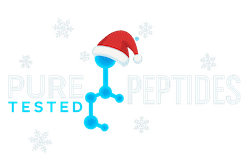Epithalon (Epitalon) vs NAD+ — Mechanisms of Action & Research Overview
For research and education only: This page refrains from recommending any treatment, extraneous usage, or regimens and avoids claims of health benefit. Content focuses strictly on mechanisms of action and published research observations.
What are Epithalon (Epitalon) and NAD+?
Epithalon (Epitalon) — Tetrapeptide Origin
Epithalon (also spelled Epitalon) is a synthetic tetrapeptide (Ala–Glu–Asp–Gly) originally derived from studies of pineal peptides. In vitro and animal-model literature most often explores its relationship to telomerase activity, telomere maintenance, and cellular stress responses, with findings dependent on model, dose, and timing used in the experiments.
SEO terms: Epithalon peptide, Epitalon mechanism, telomerase, telomere biology.
NAD+ — Central Cellular Coenzyme
NAD+ (nicotinamide adenine dinucleotide) is a ubiquitous cellular coenzyme (not a peptide). It cycles between oxidized NAD+ and reduced NADH to carry hydride equivalents in metabolism and also serves as a substrate for NAD+-consuming enzymes such as sirtuins, PARPs, and CD38/CD157, linking redox status to chromatin, DNA-repair, and calcium-signaling pathways.
SEO terms: NAD+ mechanism, sirtuins, PARP, CD38, redox cofactor.
Mechanisms of Action — Side by Side
Epithalon (Epitalon): Telomere/Telomerase-Centered Readouts
- Primary focus: Experimental reports describe induction of telomerase and telomere length changes in select human cell cultures, alongside observations on cell-cycle and stress-response markers (study- and model-dependent).
- Putative pathways: Telomere maintenance and gene-regulatory effects reported in vitro; investigations continue into transcriptional and epigenetic programs potentially influenced by short peptides.
- Interpretation caveats: Many findings derive from in vitro and animal work; results should be contextualized to the specific models and conditions used.
NAD+: Redox & Enzymatic Signaling Hub
- Redox cofactor: Accepts/donates electrons in glycolysis, the TCA cycle, and mitochondrial respiration; the NAD+/NADH ratio shapes metabolic flux and ATP production.
- NAD+-dependent enzymes: Substrate for sirtuins (deacylases affecting transcription and mitochondrial function), PARPs (ADP-ribosylation in DNA-damage responses), and CD38/CD157 (enzymes generating calcium-mobilizing messengers such as cADPR/NAADP).
- Compartmentalization: Distinct nuclear, cytosolic, and mitochondrial pools are synthesized/consumed by specific enzymes (e.g., NAMPT, NMNATs) and tuned by cellular demand.
Epithalon vs NAD+ — Key Differences & Complementarities
- Molecular class: Epithalon is a short peptide studied largely for telomerase/telomere effects; NAD+ is a small-molecule coenzyme central to redox reactions and enzymatic signaling.
- Primary “lever”: Epithalon literature centers on telomere biology and cellular stress readouts; NAD+ centers on redox balance and activity of NAD+-consuming enzymes.
- Site of action: Epithalon acts at the level of nuclear/chromosomal maintenance (as reported in vitro); NAD+ operates across cytosol, nucleus, and mitochondria with broad metabolic and signaling roles.
- Research usage: Together, they probe distinct layers of cellular regulation—chromosomal/telomeric maintenance vs redox and post-translational signaling.
Note: Findings are highly context-dependent. This overview does not imply efficacy or provide usage guidance.
Promising Research Themes (No Medical Claims)
- Epithalon (Epitalon): Further clarification of telomerase regulation, telomere dynamics, and peptide–chromatin interactions in diverse human cell types and stress conditions.
- NAD+: Mapping how NAD+ pool size and localization modulate sirtuin/PARP/CD38 signaling, genome maintenance, and mitochondrial communication under metabolic or genotoxic stress.
Research Materials — Epithalon and NAD+
For laboratories exploring telomere biology and redox/signaling pathways, Pure Tested Peptides offers:
Important: Listings are for research use only. No directions for human use, dosing, or clinical claims are provided or implied.
References (1–2 peer-reviewed sources)
Compliance & Disclaimer
This content is intended for scientific and educational audiences. It refrains from recommending any treatment, extraneous usage, or regimens and avoids claims of health benefits. Any products referenced are intended strictly for research use only.
